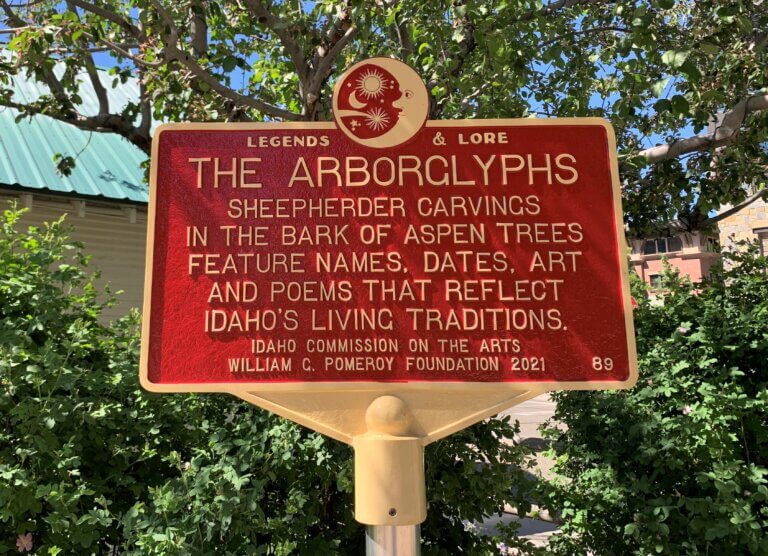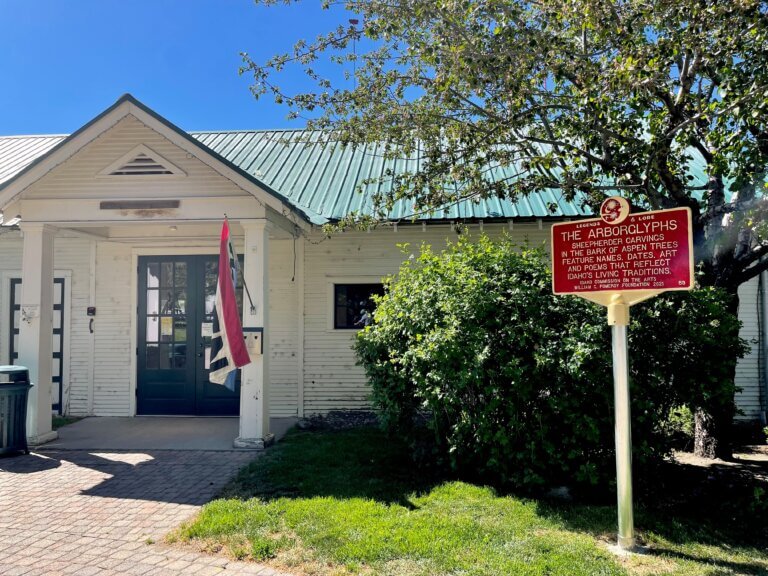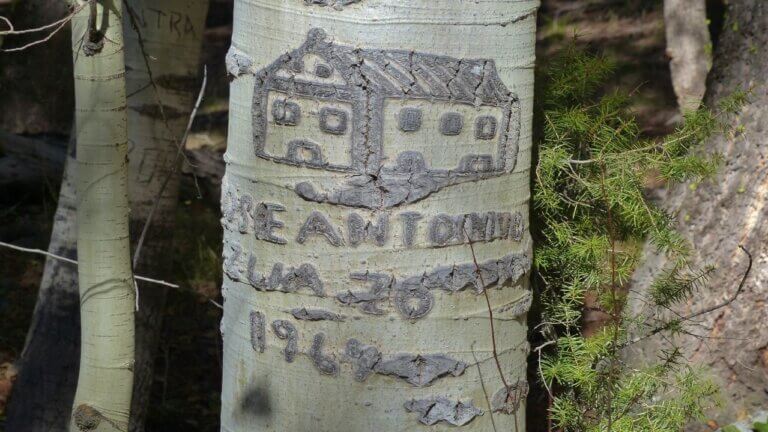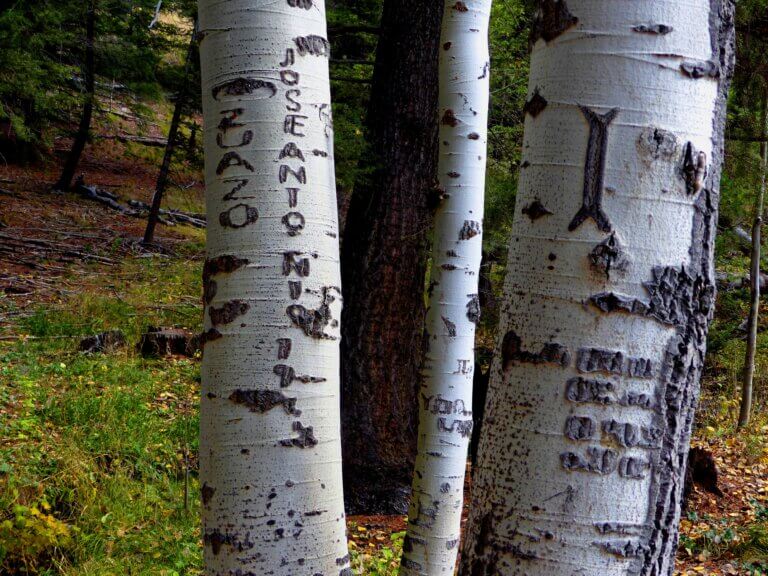THE ARBORGLYPHS
- Program
- Subject
- Location
- Lat/Long
- Grant Recipient
-
Legends & Lore®
-
Folklore
- 180 1st St E, Ketchum, ID 83340, USA
- 43.678942, -114.363624
-
Trailing of the Sheep Cultural Heritage Center, Inc.
THE ARBORGLYPHS
Inscription
THE ARBORGLYPHSSHEEPHERDER CARVINGS
IN THE BARK OF ASPEN TREES
FEATURE NAMES, DATES, ART
AND POEMS THAT REFLECT
IDAHO'S LIVING TRADITIONS.
IDAHO COMMISSION ON THE ARTS
WILLIAM G. POMEROY FOUNDATION 2021
Throughout south-central Idaho numerous images and writings can be found carved into the trunks of aspen trees. Known as the Arborglyphs, these depictions in bark show everything from animals and fishing boats to dates, names and poems. The carvings were made by sheepherders and ranchers as they led their flocks through locations such as Idaho’s Wood River Valley.
In Idaho, sheepherding and ranching has long been a way of life. Many of the initial herders and ranchers had ventured to the American West first to stake their claim as part of the Gold Rush. The majority of them are of Basque and Irish descent. The traditions and lifestyle have been passed down for generations.
During the hottest times of the summer, herders often would take cover under the shade of aspen trees. That’s where they would pass the time by carving their creations into the tree bark. The Aborglyphs became their calling card and cultural phenomena. The majority of the carvings date back to over 50 years ago.
Today, the Arborglyphs can be viewed in several parks and regions, including the Boise National Forest and Sawtooth National Forest.
Since 1996, the Trailing of the Sheep Festival helps to preserve the cultural history surrounding sheep ranching and herding in Idaho and the West. The annual festival, held in October, is a five-day celebration offering a range of events and activities, including folk arts, history programming, culinary offerings, music and workshops. The signature event is the Big Sheep Parade, which features 1,500 sheep guided through Ketchum’s Main Street as part of their annual migration to winter pastures.




